Tunable Adhesion for Bio-Integrated Devices
- PMID: 30424462
- PMCID: PMC6215118
- DOI: 10.3390/mi9100529
Tunable Adhesion for Bio-Integrated Devices
Abstract
With the rapid development of bio-integrated devices and tissue adhesives, tunable adhesion to soft biological tissues started gaining momentum. Strong adhesion is desirable when used to efficiently transfer vital signals or as wound dressing and tissue repair, whereas weak adhesion is needed for easy removal, and it is also the essential step for enabling repeatable use. Both the physical and chemical properties (e.g., moisture level, surface roughness, compliance, and surface chemistry) vary drastically from the skin to internal organ surfaces. Therefore, it is important to strategically design the adhesive for specific applications. Inspired largely by the remarkable adhesion properties found in several animal species, effective strategies such as structural design and novel material synthesis were explored to yield adhesives to match or even outperform their natural counterparts. In this mini-review, we provide a brief overview of the recent development of tunable adhesives, with a focus on their applications toward bio-integrated devices and tissue adhesives.
Keywords: bio-integrated devices; dry/wet conditions; soft biological tissue; tissue adhesives; tunable adhesion.
Conflict of interest statement
The authors declare no competing financial interests.
Figures
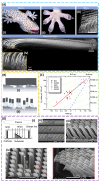
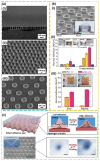
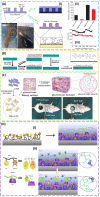
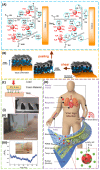
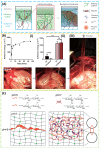
Similar articles
-
Bio-inspired switchable soft adhesion for the boost of adhesive surfaces and robotics applications: A brief review.Adv Colloid Interface Sci. 2023 Mar;313:102862. doi: 10.1016/j.cis.2023.102862. Epub 2023 Feb 20. Adv Colloid Interface Sci. 2023. PMID: 36848868 Review.
-
Engineering Bio-Adhesives Based on Protein-Polysaccharide Phase Separation.Int J Mol Sci. 2022 Sep 1;23(17):9987. doi: 10.3390/ijms23179987. Int J Mol Sci. 2022. PMID: 36077375 Free PMC article.
-
Tunable denture adhesives using biomimetic principles for enhanced tissue adhesion in moist environments.Acta Biomater. 2017 Nov;63:326-335. doi: 10.1016/j.actbio.2017.09.004. Epub 2017 Sep 7. Acta Biomater. 2017. PMID: 28890256
-
Dytiscus lapponicus-Inspired Structure with High Adhesion in Dry and Underwater Environments.ACS Appl Mater Interfaces. 2021 Sep 8;13(35):42287-42296. doi: 10.1021/acsami.1c13604. Epub 2021 Aug 28. ACS Appl Mater Interfaces. 2021. PMID: 34455771
-
Nature-inspired adhesive systems.Chem Soc Rev. 2024 Aug 12;53(16):8240-8305. doi: 10.1039/d3cs00764b. Chem Soc Rev. 2024. PMID: 38982929 Review.
Cited by
-
Preparation and Biomedical Applications of Cucurbit[n]uril-Based Supramolecular Hydrogels.Molecules. 2023 Apr 19;28(8):3566. doi: 10.3390/molecules28083566. Molecules. 2023. PMID: 37110800 Free PMC article. Review.
-
Linking energy loss in soft adhesion to surface roughness.Proc Natl Acad Sci U S A. 2019 Dec 17;116(51):25484-25490. doi: 10.1073/pnas.1913126116. Epub 2019 Nov 26. Proc Natl Acad Sci U S A. 2019. PMID: 31772024 Free PMC article.
-
Editorial for Special Issue on Flexible Electronics: Fabrication and Ubiquitous Integration.Micromachines (Basel). 2018 Nov 19;9(11):605. doi: 10.3390/mi9110605. Micromachines (Basel). 2018. PMID: 30463187 Free PMC article.
-
Recent Developments of Flexible and Stretchable Electrochemical Biosensors.Micromachines (Basel). 2020 Feb 26;11(3):243. doi: 10.3390/mi11030243. Micromachines (Basel). 2020. PMID: 32111023 Free PMC article. Review.
-
Rapid and continuous regulating adhesion strength by mechanical micro-vibration.Nat Commun. 2020 Mar 27;11(1):1583. doi: 10.1038/s41467-020-15447-x. Nat Commun. 2020. PMID: 32221304 Free PMC article.
References
Publication types
Grants and funding
- NA/Start-up fund provided by the Engineering Science and Mechanics Department, College of Engineering, and Materials Research Institute at The Pennsylvania State University
- NA/ASME Haythornthwaite Foundation Research Initiation Grant
- NA/Doctoral New Investigator grant from American Chemical Society Petroleum Research Fund
- NA/Dorothy Quiggle Career Development Professorship in Engineering and Global Engineering Leadership Program at Penn State
LinkOut - more resources
Full Text Sources

